Guide

Zev Farber
Images of Joshua in the Bible and Their Reception
Beihefte zur Zeitschrift fr die alttestamentliche Wissenschaft
Edited by
John Barton, Reinhard G. Kratz and Markus Witte
Volume 457

ISBN 978-3-11-033888-1
e-ISBN (PDF) 978-3-11-034336-6
e-ISBN (EPUB) 978-3-11-038366-9
ISSN 0934-2575
Library of Congress Cataloging-in-Publication Data
A CIP catalog record for this book has been applied for at the Library of Congress.
Bibliographic Information published by the Deutsche Nationalbibliothek
The Deutsche Nationalbibliothek lists this publication in the Deutsche Nationalbibliografie; detailed bibliographic data are available on the Internet at http://dnb.dnb.de.
2016 Walter de Gruyter GmbH, Berlin/Boston
www.degruyter.com
Dedicated to my wife, Channie.
ACKNOWLEDGMENTS
This book began as a Ph.D. dissertation at Emory University, and thus, I must first acknowledge my dissertation advisor, Jacob Wright, for guiding me through the process, as well as the rest of the committeeWilliam Gilders, Luke Timothy Johnson, Ed Noort, Carol Bakhos, and Michael Segalfor their comments and critiques, all of which helped me improve the book. I also want to mention my M.A. advisor of long ago, Mordechai Cogan; his seminar in Joshua peaked my interest in this topic in the first place. I further wish to thank De Gruyter and the editors of the BZAW series for working with me on this project, specifically Reinhard Kratz for his initial feedback, and Sabina Dabrowski and Sophie Wagenhofer for carrying the project through. I would also like to thank Angela Roskop Erisman for putting together the index, as well as my friend Jeffrey Sokolow for proofreading the manuscript. Even with all this assistance, there will still be errors and linguistic infelicities, all of which are my own.
Introduction
In this book I trace the development and reinvention of the image of the prominent biblical character of Joshua ( ) over time and through a variety of traditions. Focusing on the literary character of Joshua, with a particular emphasis on how these depictions of Joshua relate to the societies that reinvent him, this study endeavors to contribute a greater understanding of the interaction between reception history and mnemohistory (i. e., cultural memory studies) in the identity formation and internal narrative of a culture. Additionally, by focusing the lens on multiple religious traditions and periods, my hope is to improve our understanding of the continuities and discontinuities of religious traditions that differ radically but, nevertheless, maintain certain figures and ideals in common.
Outline
This book explores the mnemohistory of Joshua as expressed by groups who venerate him as part of their cultural memory. I discuss two related questions about mnemohistory, both focusing on how the construction of cultural memory affects the way a group speaks about figures from its past. First, how much does the inherited story define the nature of the discourse about the character? Conversly, how much do each cultures values, even if different from those of the earlier sources, define its discourse about the received character? The give and take between these two foci forms the basis of the question and research in this project.
The books six chapters can be divided roughly into three parts: Biblical Joshua ( catalogues and isolates the images of Joshua in the Bible and offers an overall impression of Joshuas multifaceted character.
As useful as this synchronic approach may be, however, it is insufficient for understanding the biblical text. Modern methods of biblical study, such as re traces the contours of this development.
These two chapters work in tandem. Analyzing the text synchronically uncovers a Joshua who grows and changes over time and who cannot be described two-dimensionally. It is this complex biblical character who inspires generations of readers to interpret and reinterpret the story of Joshua from multiple hermeneutic perspectives. The opening chapter approaches the material from this vantage point.
At the same time, isolating the discontinuities in the received text facilitates diachronic readings. Although the editors do their best to smooth out the tensions in Joshuas story and his character, most scholars agree that real discontinuity lies beneath. The best explanation for this discontinuity is that multiple Joshua traditions developed in different communities during different periods. Since important cultural markers and values inevitably shift among various communities, it is hardly surprising that a number of tailor-made Joshuas appeared among the ancient Israelites and Judahites, eventually being woven together into one complex character by the biblical editors.
Unfortunately, if there were pre-biblical documents discussing JoshuaI believe there werethey are lost to us, and any suggestion of what they may have contained needs to be reconstructed. For oral traditions, the matter is even more daunting. As part of my diachronic analysis, I will offer some suggestions for the origins of the various biblical images of Joshua. The goal is to understand when and where these images of Joshua emerged, what communities they resonated with and what functionreligious, polemic, nationalistthey may have served before they were smoothed over by the biblical editors. As part of this project,
As these retellings of the Joshua story come from very different contexts, it is not surprising that their perspectives are very different as well. The chapter evaluates which images of Joshua each retelling focuses upon and looks for correlation between this reception of Joshua and the overall project of the author whenever possible.
The , it partakes of the same genre as many of them (especially L.A.B .).
examines the early Christian use of Joshua as a prefiguring of Jesus. The first half of the chapter concentrates on the creation of the Joshua-Jesus typology, and the rest traces the ebb and flow of the usage of this typology through the fourth century CE.
The sixth and addresss Joshua as he is understood in rabbinic literature. Although the Rabbis have a multiplicity of interpretations and images of Joshua, many of which contradict each other, the relationship of Joshua to Moses features prominently in many of the rabbinic interpretations. The possibility (or probability) that the rabbis were aware of the Christian understanding of Joshua as a Jesus figure will be explored as well.
Finally, the book concludes with a synthesis of the data from the six chapters, in which I consider how the various continuities and discontinuities in Joshuas character as presented in these texts reflect on the groups who tell these stories. The goal is to appreciate the extent to which each groups unique reception of this one character bears a relationship to its own cultural values and, conversely, to what extent it creates continuity with different groups and with a (perceived) shared past.
Scope of the Book
In determining the scope of the book, I took into account three limiting factors were at play. One guiding principle has been to maintain focus on Joshuas image. The question driving the research is how his image was constructed in the memories of various groups. For this reason certain topics generally discussed when analyzing Joshua have been avoided.


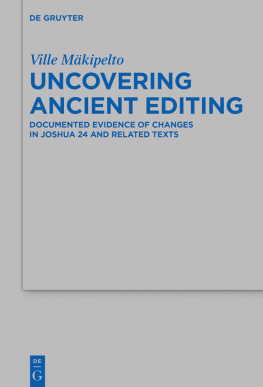
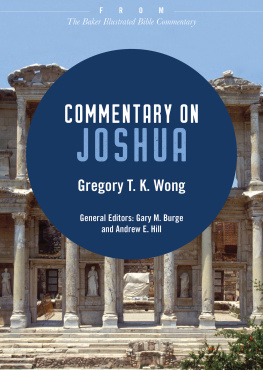
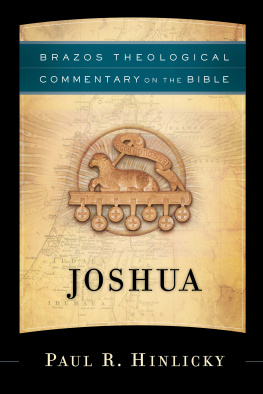
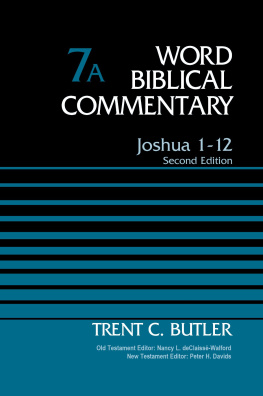


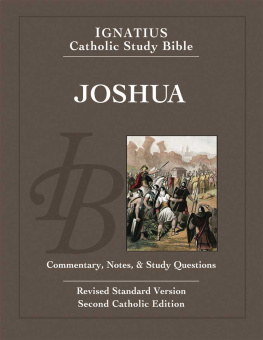
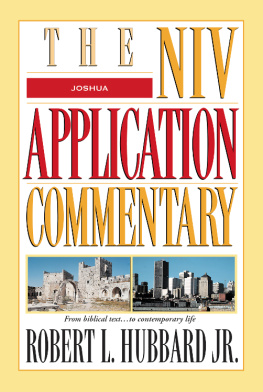
![Joshua Backfield [Joshua Backfield] - Becoming Functional](/uploads/posts/book/120483/thumbs/joshua-backfield-joshua-backfield-becoming.jpg)




